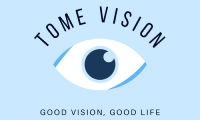Understanding Different Types of Contact Lenses
Contact lenses have made significant advances in recent years, offering individuals with vision problems a comfortable and convenient alternative to eyeglasses. There are various types of contact lenses available in the market, each designed to address specific vision needs. If you are considering contact lenses, it is essential to understand the different types and their benefits. In this article, we will explore the most common types of contact lenses, including soft lenses and rigid gas permeable lenses, and discuss their advantages and considerations.
Soft Contact Lenses
Soft contact lenses are the most popular choice among contact lens wearers due to their comfort and ease of use. Made from a soft, flexible plastic material called hydrogel, these lenses conform to the shape of the eye, providing a comfortable fit. There are different types of soft contact lenses, including daily disposables, bi-weekly, and monthly wear lenses.
1. Daily Disposables
Daily disposable lenses are the most convenient option, particularly for people with allergies and those who prefer not to clean and store their lenses. These lenses are designed to be thrown away after a single day of use, eliminating the need for cleaning routines and reducing the risk of eye infections. Daily disposables are available for various vision corrections, including nearsightedness, farsightedness, astigmatism, and presbyopia.
2. Bi-weekly and Monthly Wear Lenses
Bi-weekly and monthly wear lenses are another type of soft contact lenses suitable for extended use. These lenses require a regular cleaning and storage routine to maintain hygiene and prevent infections. Bi-weekly lenses should be replaced every two weeks, while monthly wear lenses need to be replaced monthly. These lenses offer excellent vision quality and are cost-effective for individuals who wear contact lenses regularly.
Rigid Gas Permeable (RGP) Contact Lenses
Rigid gas permeable lenses, also known as GP or RPG lenses, are made from a firm plastic material that allows oxygen to pass through to the cornea. These lenses offer clear and crisp vision and are remarkably durable compared to soft lenses. While initially harder to get used to, they offer advantages such as better resistance to lens deposits and a lower risk of eye infections.
Considerations for Contact Lens Wearers
1. Lifestyle Factors
When choosing the right type of contact lens, it’s essential to consider your lifestyle. If you have an active lifestyle, daily disposables or extended wear lenses may be more suitable. On the other hand, if you have more specific vision needs or prefer crisper vision, RPG lenses may be a better option.
2. Eye Health and Comfort
The health and comfort of your eyes should always be a priority. Some individuals may experience dryness or irritation when wearing contact lenses. In such cases, it is crucial to consult with an eye care professional who may recommend specific lens materials or eye drops to improve comfort and reduce discomfort.
Key Benefits of Contact Lenses
– Natural and unobstructed peripheral vision compared to eyeglasses.
– Greater flexibility in physical activities such as sports and outdoor adventures.
– Ability to choose from a wide range of vision corrections, including astigmatism and presbyopia.
– Improved self-confidence and aesthetics, as contact lenses do not alter your appearance.
– Easy adaptation for new wearers due to comfort and familiarity.
Understanding the different types of contact lenses is key to finding the right solution for your vision needs. It is essential to consult with an eye care professional to determine which type of lens would work best for you. With the advancements in contact lens technology, there is sure to be an option that will provide you with clear and comfortable vision throughout your day.
